Gardening success is all about understanding your soil. Some soils, like dry, sandy soils or heavy clay soils, are more challenging than others to work with. Your soil is classified by texture based on its amount of sand, silt and clay. (Find your soil type by doing the DIY soil test.)
In addition to soil texture, your soil has a pH. Your soil pH is important because it tells you, on a scale from zero to 14, if you have acidic or basic soil. Acidic soils have a pH below 6, and alkaline, or basic, soils have a pH above 7. Most garden soils are in the neutral range, between 6 and 7, but there may be pockets in your landscape that have a higher or lower pH.
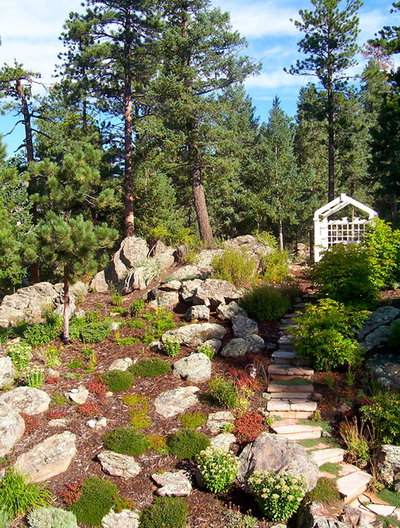
Bear Creek Landscape
Why does pH matter?Soil pH affects how plants take up nutrients. Most plants can survive just fine in soils with different pH numbers, but there are some plants that actually require acidic soil to thrive. Some of the more common of these varieties (known in the botanical world as ericaceous plants) include azaleas, blueberries and other eastern woodland species.
In the United States, you’ll find more acidic soils in areas with dense conifer forest cover and generous rainfall — such as the Pine Flatwoods of the Southeast, the Hemlock-Cedar Forests of New England and the Pacific Northwest region.
Similarly, you might have pine trees or other conifers that contribute to an already acidic soil on your property. If that’s the case, ericaceous plants will thrive there. To find out, pick up an easy soil pH test at your local hardware store. Then match ericaceous plants with areas on your property that have acidic soil.
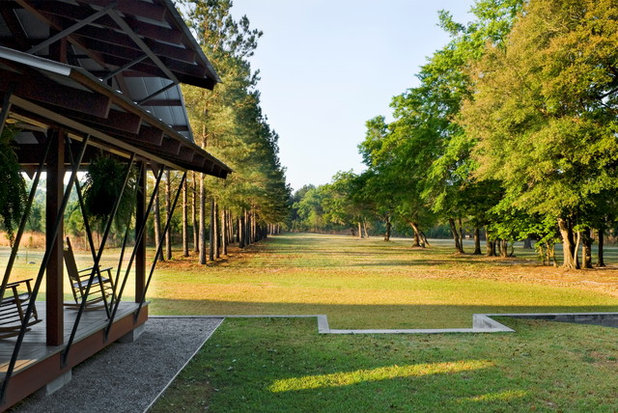
Robert M. Cain, Architect
Soil acidity around conifers is due in part to the way ions are exchanged between conifer roots and the surrounding soil. Additionally, there is a debate among gardeners about whether or not pine needles will acidify soil over time if it’s used as a mulch. Pine needles are acidic when they are freshly fallen from a tree, but they lose acidity within weeks. They have not been shown to dramatically alter soil acidity.
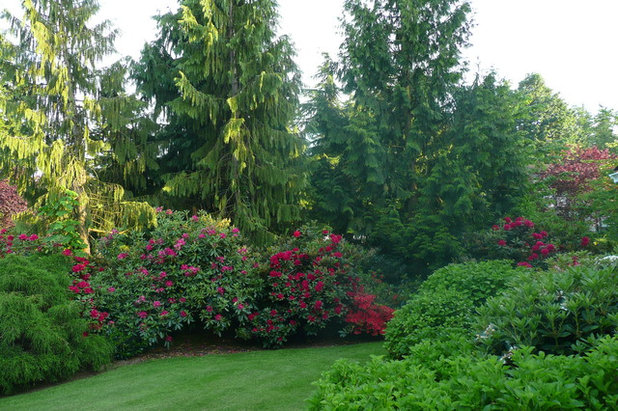 Designing a Garden With Acidic Soil
Designing a Garden With Acidic SoilFor a more formal garden, large clusters of
rhododendron, an ericaceous plant, can be planted under skyrocketing conifers. This is a popular plant combination for a thickened border at a lawn edge or a formal, parterre-style garden.
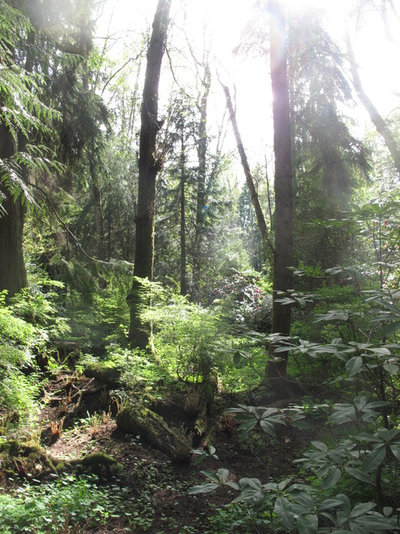
Debra Prinzing
This image, of The Bloedel Reserve garden in Seattle, shows native, acid-loving plants such as rhododendron in the foreground. Rich, well-draining, acidic soil and filtered sunlight create the perfect woodland setting for rhododendrons.
Achieve this woodland look in a shady area of your garden by layering ericaceous shrubs and ground covers together beneath large
conifers. The various textures and heights look organic when these three types are planted together.
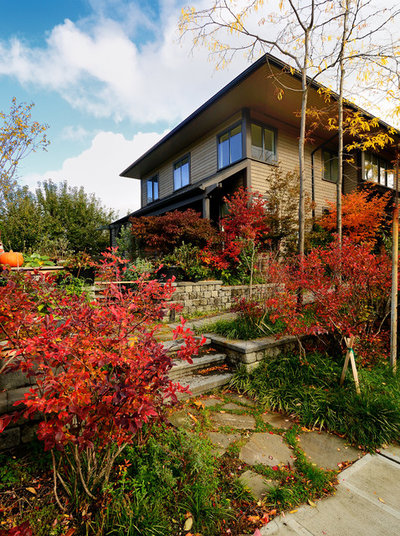
Studio Ectypos
Rhododendrons and conifers are not the only ericaceous plants. Pictured here is
highbush blueberry (
Vaccinium corymbosom) at the peak of its autumn splendor. All the plants in the
Vaccinium genus thrive in slightly acidic to strongly acidic soil.
Vaccinium includes great native plants that produce edible fruits:
- Lowbush blueberry (Vaccinium angustifolium)
- Evergreen huckleberry (Vaccinium ovatum)
- American cranberry (Vaccinium macrocarpum)
- Red huckleberry (Vaccinium parvifolium)
Read about growing blueberries
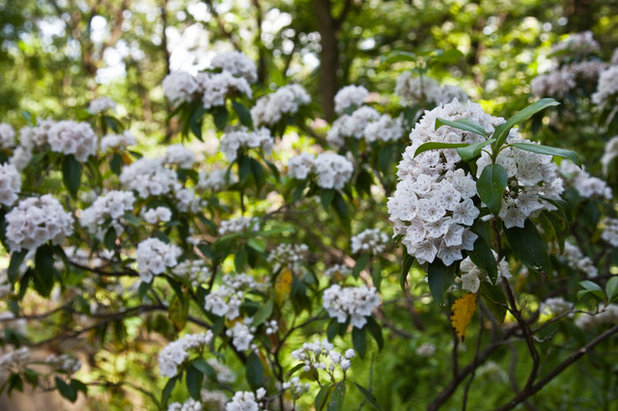
Matthew Cunningham Landscape Design LLC
Mountain laurel (
Kalmia latifolia) grows wild as an understory shrub in the Appalachian Mountains and in higher-elevation white-pine forests in New England. It’s a truly remarkable plant with large and showy white flower clusters. The flowers have intricate creases reminiscent of origami. It’s a stellar native species for a woodland garden as a massing shrub or specimen. It resembles rhododendron in form, with its slender, arching stems and narrow leaves.
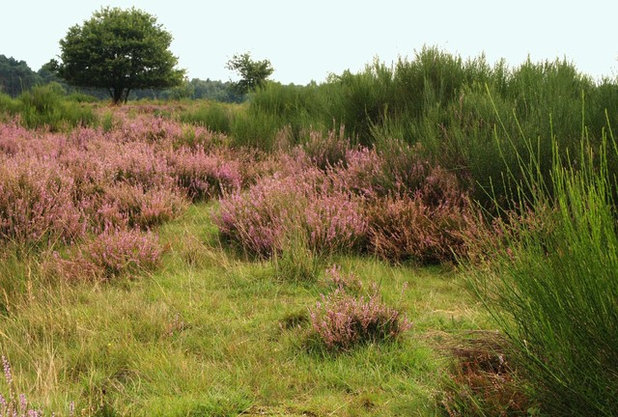
Hans-Christian
Heather (
Calluna vulgaris)
makes a romantic sweeping ground cover of purple-pink. Heather plants are finicky; they require rich and acidic soil, full sun, excellent drainage and annual pruning to look their best. Plant them alongside a walkway, as a creeping ground cover bordering a woodland garden or in drifts on a hillside for a dramatic effect.
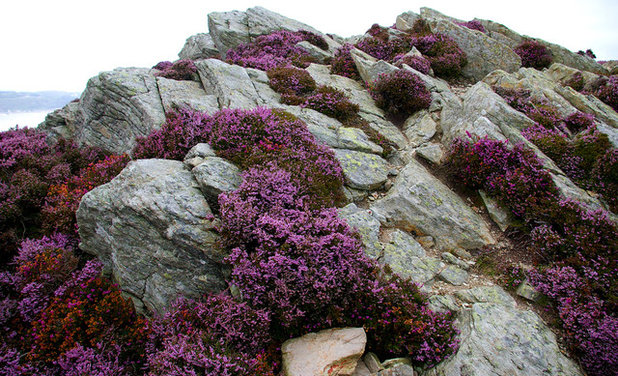
Brian Mottershead
Once established,
Calluna vulgaris can also work for the rock garden, because it can survive drought conditions as long as the soil is acidic and the plants have well-developed roots.
See how to work with dry, sandy soils or heavy clay soils.
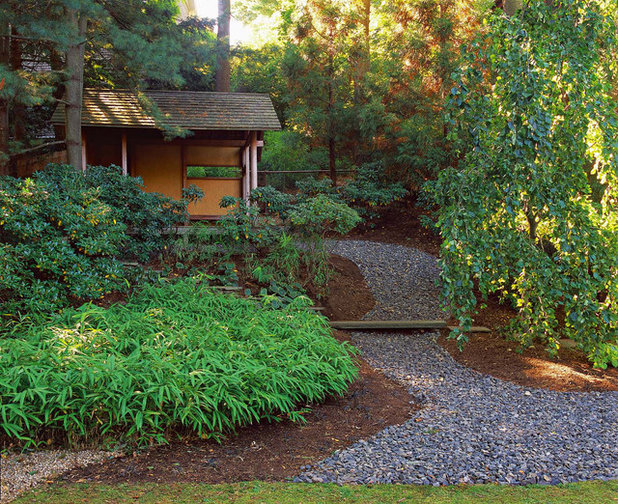
Traditional Japanese gardens feature many types of carefully selected and expertly shaped evergreens — many of them are ericaceous conifers. Pictured here is a Japanese-inspired garden with rhododendrons as the understory to towering pines. Japanese gardens celebrate forms and textures of many different cultivars of evergreen ground covers, shrubs and trees. The price tag for these specialty cultivars may shock you, because they are specialty plants ordered in limited quantities by the nursery. Look for cultivars of
Japanese red pine (
Pinus densiflora) and
Hinoki cypress (
Chamaecyparis obtusa ‘Gracilis’) for medium-size conifers. Once those are established, grow more plants for your property from vegetative cuttings of the specialty cultivars. The investment will pay off over time as you propagate and plant new plants each year.
More:Ideas for a Woodland Garden
Your Soil: The Simple Secret to Gardening Success





